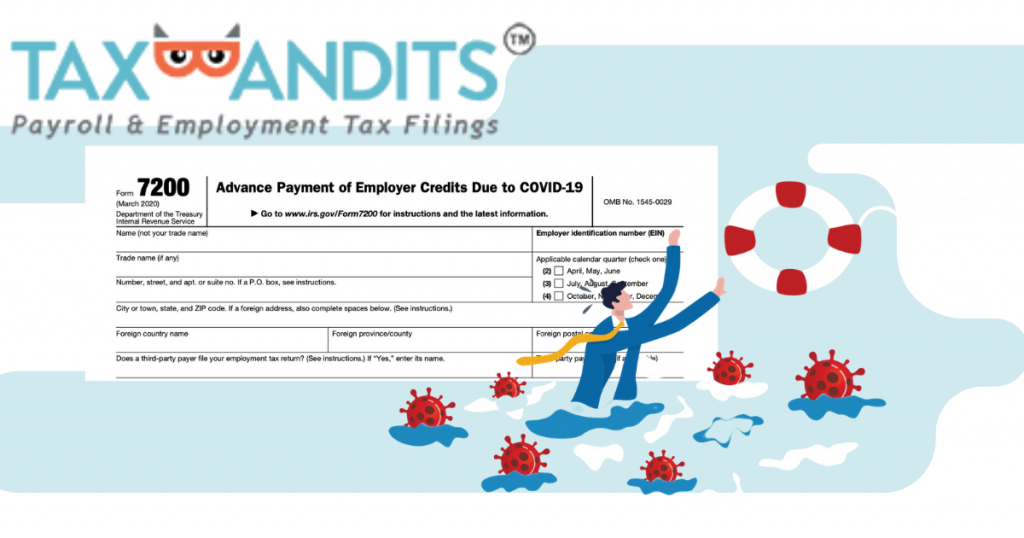The Complete Guide To Form 7200
reading time: 11 minute(s)

You have probably heard about the Form 7200 as an option for taking advantage of the COVID-19 related tax relief. However, it is a relatively new form and you may have questions. You’re not alone! Many of our clients have been asking our team to assist them with understanding and filing this form.
Here is a guide to help you understand and successfully file your Form 7200. As a small business owner, you have a lot of challenges to overcome right now. If you have been wondering if you need to file this form for your business or wondering the protocol for doing this, stay tuned.
What is Form 7200?
The Form 7200: Advance Payment of Employer Credits Due to COVID-19 was created and published by the IRS was in March 2020. This form was created to accommodate the tax credits that employers can utilize as relief amid COVID-19.
When employers deduct these credits from their deposits in anticipation of these credits. If the deposits alone don’t cover the entire amount of credits that they are eligible for, the Form 7200 allows these employers to request an advance on these credits.
If your credits are balanced and deferring your deposits covers the amount of credits that you are due, you will not need to file this form. You can simply report your deferred employer payments on Form 941.
Background on the CARES ACT and FFCRA
So, what is the deal with these aforementioned credits? Let’s talk in more detail about the CARES Act to understand the purpose of these credits and why they are important to employers.
The CARES Act was signed into law on March 27, 2020. Part of this massive stimulus package was tax relief options for businesses in need of economic aid amid the declining economic conditions.
To encourage struggling businesses to keep their employees on payroll, the Employee Retention Credit was created. This credit allows employers to apply for refundable tax credits for their employees’ sick and family leave.
What Does Form 7200 Look Like?
The Form 7200 is a relatively short form, it is only one page in length. There are essentially three sections to fill out and the form must be signed by the appropriate person.
The first section of the form is for the basic business information that the IRS will need to process your form. Be sure to have your Employer Identification Number (EIN) handy before you begin filing this form.
The next section of the form is still pretty straightforward. You will need to indicate which employment tax return you file with the IRS and the amount that you reported on your most recent return.
The final section, Part II, is where the form becomes much more complex. There is some math involved. You will indicate the amount of advance credits you are requesting in line 8, but first you will indicate the credits that you are eligible for and the deposits you have reduced. To do this you will add up lines 1, 2, and 3. Then record the total on line 4.
Once completing the Form 7200, you and your paid tax preparer will need to sign the form. Then you will need to fax this form to the IRS.
Why You Should File Form 7200 with TaxBandits
The fact that this is a new IRS Form dealing with a new system of tax relief credits is reason enough to cause trepidation amongst business owners. Filing this form with the IRS can be stressful, that’s why the team at TaxBandits has created a simple solution. Simply create a free account and get started.
All you need is your most recent employment tax return and your basic business information. Our software will walk you through the filing process by prompting you for the needed information.
You don’t have to worry about getting locked into any hidden or annual fees, just complete your Form 7200 and pay when you are ready to submit it to the IRS. Since the IRS is only accepting this form by fax, we will handle that part of the process for you.



Leave a Comment